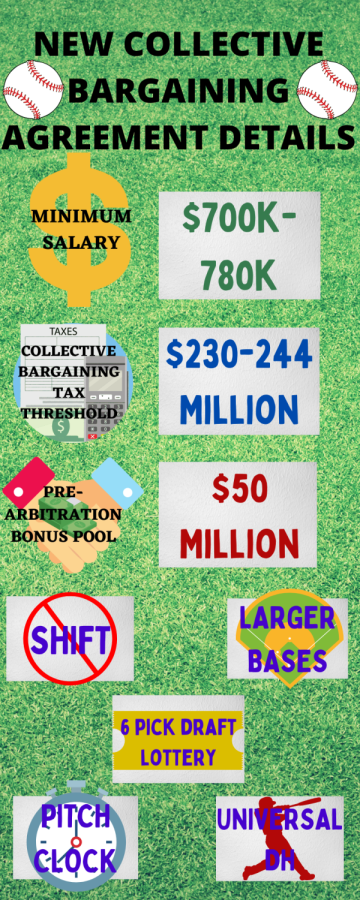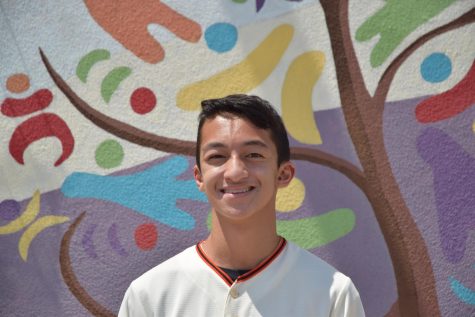Major League Baseball returns after the league reaches new agreements
New agreements had to be made on and off the field for teams to proceed playing this season.
March 13, 2022
The expiration of the collective bargaining agreement between the MLB owners and the Major League Baseball Players Association on December 1, 2021 caused the owners to implement a lockout until a new deal was reached, meaning that the season was put on hold. After 99 days, with long days negotiating back and forth, a new CBA was finally reached.
“I was really bummed that the season was delayed. I wished they could have figured it out a couple months ago. To me, it’s just a game. Everybody makes a lot of money as it is, but I’m just glad that they were finally able to reach a deal for the fans,” said Physics Teacher and Giants fan John Brix.
The owners made a proposal in the afternoon on March 10th, and the union executive board voted 8-0 against it. But the teams voted 26-4 in favor, leading the players to accept the deal and end the lockout. For the key economic issues, the collective bargaining tax threshold was increased to $230 million, the minimum salary was increased to $700,000, and the pre-arbitration bonus pool is $50 million. The collective bargaining tax and minimum salary will increase over the next 5 years to $244 million and $780,000 respectively. Although many fans might not pay attention to the logistics, these numbers are crucial for the players and owners.
“I wanna watch baseball. I don’t really care about the organization itself. I’m more of a fan rather than in the business of it all,” said Varsity Second Baseman Ross Kobayashi (‘23).
In addition to economics, the two sides agreed on a few rule changes. Starting in 2023, the league will implement a pitch clock and larger bases. Likely, pitchers will have 14 seconds with the bases empty and 19 seconds with runners on base to pitch the ball. Bases will be increased from 15 square inches to 18 square inches. In addition, they will ban the shift. Typically in the shift, the second baseman or shortstop shifts over to the other side of the field due to the batter’s tendency to hit it to a specific side of the field. But now, that will likely not be allowed as the MLB is attempting to generate more offense for a more enjoyable game.
“I think the game already takes too long and averages were way down last year. So I think banning the shift will make it more fun to watch and the games will be a little shorter which might bring in more viewers,” said Varsity Baseball Pitcher Oliver de la Torre (‘23).
Outside of the game itself, the MLB is making some structural and schedule changes as well. In effect this year, the designated hitter has been expanded to the National League, and the postseason will now consist of 12 teams instead of 10.
“I think it’s better to give more teams a chance in the playoffs since some of the borderline teams are deserving. Either way, the best team of the bunch ends up winning it all and there’s nothing wrong with bringing more teams to the mix,” said Baseball Fan Daniel Beckley (‘23).
Now that the MLB has worked through all the logistics, free agency has now officially started and spring training games will start around March 18. Opening Day will be on April 7, and teams will play who they were originally scheduled to play that day. The games that were canceled will be made up with double-headers.
“As it was going on I was like, ‘Oh great here we go again.’ I was alive when the first lockout happened and they didn’t have a season at all. I became disenfranchised with baseball and didn’t get back into it for a number of years. It wasn’t until the early 2000s where I started getting back into baseball again. I was afraid that something like this would happen again,” said Brix.





